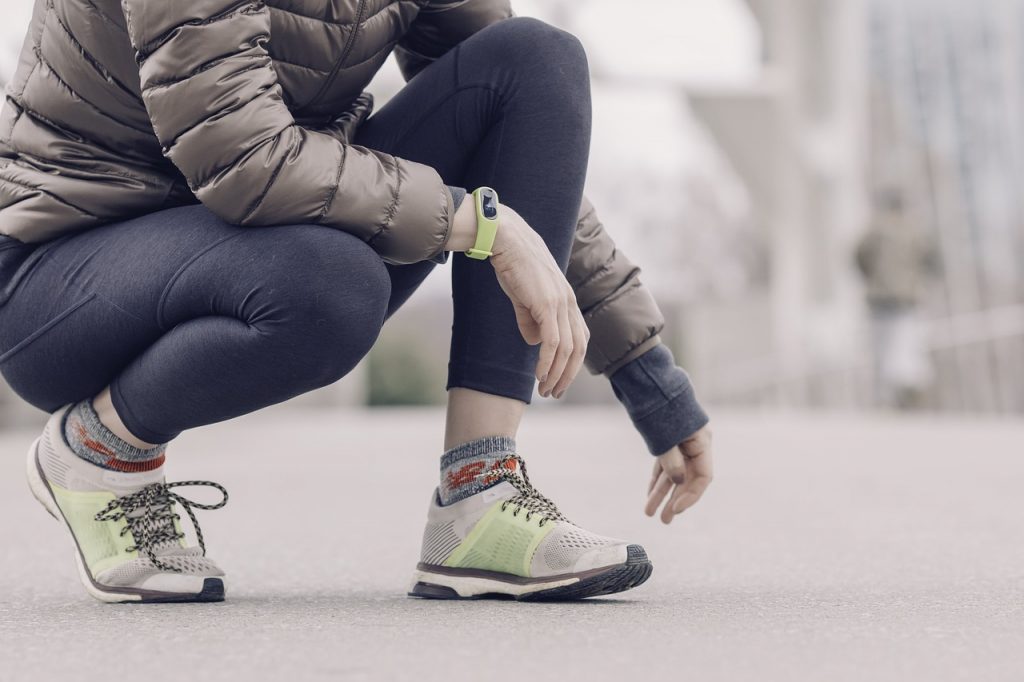Wearable technology demonstrates the power of the Internet of Things (IoT) and its immense benefits, especially in healthcare. The IoT facilitates collection of data from sensor-enabled devices and brings information right to your fingertips, with a few taps on your smartphone apps. In the age of Google Home and Amazon Echo, the IoT has enabled us to walk into a room, and be able to control the thermostats, oven, lights and even laundry settings. Machine learning can help predict user activity, which can further dictate device action. This smart technology has steadily entered the healthcare realm, giving us the “Medical Internet of Things” a.k.a the MIoT.
During the past decade, we have seen an unprecedented surge in the use of wearable biosensors–Fitbit, Apple Watch and other similar gadgets. Allied Market Research projects a net value of $136.8 billion worldwide by 2021 for the MIoT. This would make MIoT the single largest category, constituting a solid 40%, of the total IoT. Wearable biosensors are user friendly and easily integrable into regular lifestyle and practices. While the wrist band sensors which measure the basic parameters (heart rate, calories burnt) are one of the most popular type of MIoT gadget, the technology space has been continuously evolving to include a wider variety of wearable biosensors.

Smart bras and insoles
Electronics integrated into textile and clothing, can provide a much more comprehensive coverage of bodily parameters. For instance, the embedded sensors in a smart bra can monitor electrocardiogram (ECG) from the heart directly, heart rate variability and incorrect body postures. Currently, clinical trials are underway to develop advanced smart bras that may assist early detection of breast cancer. The smart bra will rely on monitoring circadian temperature changes in the breast and increase in vascularity from hemoglobin using light/sound signals. Another example is smart insoles for shoes that can monitor impact force and gait to help detect and correct motion abnormalities in people post-orthopedic procedures on the spine or foot.
Tech Tattoo
An upcoming category of epidermal electronics that brings wearable technology in robust contact with the skin is the “tech tattoo”. The temporary tattoos were first developed as a stick-on design on membranes that mimic the skin’s mechanical flexibility. The latest version of these tattoos permits permanent etching with bio-sensing inks onto the skin; converting it into a technology interface. These tattoos monitor and change color in response to bodily changes in blood glucose levels, hydration levels and excess exposure to UV radiation.
#Researchers aim beyond #wearables with project combining #art, #medicine https://t.co/3c2zGdUHFT #DermalAbyss #tattoo #biotech @MIT
— Concentric Sky (@ConcentricSky) October 5, 2017
Smart Contact Lenses
The latest addition to wearable gadgets is a smart contact lens. Tested successfully in rabbits so far, the soft lens made of transparent stretchable nanomaterials, can detect increase in glucose levels in the tears, in real time. Some future applications of smart contact lenses will include measuring eye pressure and structural changes in cornea that may affect one’s vision.
https://t.co/EyE72tdQIP https://t.co/QdUmUyHXjX New smart contact lens for diabetics introduced — ScienceDaily – Sc pic.twitter.com/JQI5hLThvm
— Kings Hill Opticians (@KingsHillOpt) March 26, 2018
Where does this boom in wearable tech come from? Traditionally, medical practices have focused on a curative approach rather than a preventive strategy. The increasing cost of healthcare has now pushed preventive practices to the center stage, with wearable biosensors right at the heart of it. The easy to use, portable and functional devices help the user monitor his/her basic well-being, without having to make that trip to the doctor’s office. Collectively, individual demand alongside the pressure to control healthcare costs encourages the use of wearable biosensors. Accessories like the Apple Watch can additionally bring your digital life (social media, email, messages and updates) directly to your wrist, thus winning additional brownie points from the user.
Wearable technology is here to stay. It is only going to grow more and more each day. Gradually, the MIoT is encroaching our home space, as a passive biosensor. Despite their portability, wearable devices must be carried around on person, and can measure only so many parameters. However, when combined with a smart home plan, a comprehensive health data profile can be maintained in a digital cloud, which can be relayed to your health practitioner in case of any major pattern anomalies. Smart homes can facilitate passive monitoring of biological fluids with measurements of factors ranging from dietary habits to urine and stool analysis. Smart home health products range from smart pill dispensers to cloud-based Smart Home Environment platforms, that include robots who can prompt patients to drink more water if dehydrated, or help a person call for help in case of a fall.
Undoubtedly, providing access to the tech companies handling all this personal data to materialize this future comes with due concerns. It will be necessary to review current federal policies and legislative measures for data security and ensure privacy protection of individuals. Wearable technology in healthcare will be particularly pivotal for people with chronic illnesses, participants of clinical trials and the elderly, whose body vitals need to be monitored more regularly. It may take us a few decades to get there, but the revolutionary MIoT can potentially become the future of healthcare someday.







